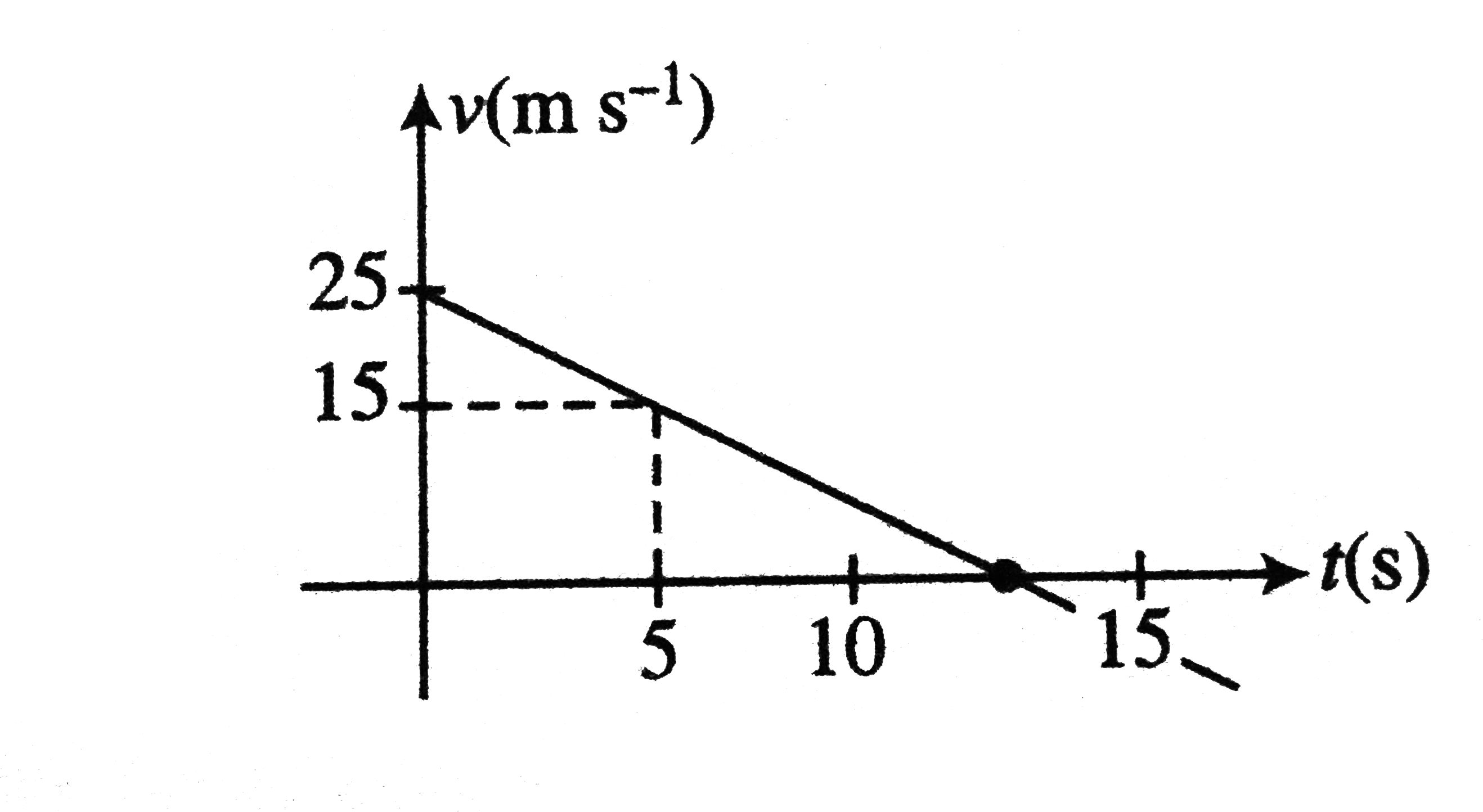A particle starts moving with initial velocity u=25ms−1 and retardation a=−2ms−2. Draw the velocity-time graph.
v=u+at⇒v=25−2t

Topper's Solved these Questions
- BOOK - CENGAGE PHYSICSCHAPTER - BASIC MATHEMATICSEXERCISE - Exercise 2.32videos
BASIC MATHEMATICS
- BOOK - CENGAGE PHYSICSCHAPTER - BASIC MATHEMATICSEXERCISE - Exercise 2.46videos
BASIC MATHEMATICS
- BOOK - CENGAGE PHYSICSCHAPTER - BASIC MATHEMATICSEXERCISE - Exercise 2.12videos
BASIC MATHEMATICS
- BOOK - CENGAGE PHYSICSCHAPTER - ARCHIVES 2 VOLUME 6EXERCISE - Integer4videos
ARCHIVES 2 VOLUME 6
- BOOK - CENGAGE PHYSICSCHAPTER - CALORIMETRYEXERCISE - Solved Example13videos
CALORIMETRY
Similar Questions
If a particle starts moving with initial velocity u=1ms−1 and acceleration a=2ms−2, the veloctiy of the particle at any time is given by v=u+at=1+2t. Plot the velocity-time graph of the particle.
View SolutionIf a particle starts moving along x-axis from the origin with initial velocity u=1ms−1 and acceleration a=2ms−2, the relationship between displacement and time is
x=ut+12at2=1×t+12×2×t2=t+r2
Draw the displacement (x)-time (t) graph.View Solution
Knowledge Check
- Question 1 - Select One or More
A particle moves with an initial velocity v0 and retardation αv, where v is the velocity at any time t.
AThe particle will cover a total distance v0αBthe particle will come to rest after time 1αCthe particle will continue to move for a along timeDThe velocity of particle will become v0e after time 1α - Question 2 - Select One
A body starts moving with a velocity v0=10ms−1. It experiences a retardation equal to 0.2v2. Its velocity after 2s is given by
A+2ms−1B+4ms−1C−2ms−1D+6ms−1 - Question 3 - Select One
A particle moves with initial velocity v0 and retardation αv, where v is velocity at any instant t. Then the particle
Awill cover a total distance V0αBcontinues to move for a long time span.Cattains a velocity (v0/2) at t=1/αDthe particle comes to rest at t=1/α
If a particle starts moving along x-axis from origin with initial velocity u=2m/s and acceleration 4m/s2 the relation between displacement and time is given as x=2t+2t2. Draw the displacement time graph for t>––––0.
View SolutionA particle is moving with an intial velocity of 5ms−1. What will be the velocity of the particle at t=3s, if the acceleration of the particle is given by
a=16t3−12t2+6t−25View SolutionThe rod of length l=1m rotates with an angular velocity ω=2rads−1 an the point P moves with velocity v=1ms−1 and acceleration a=1ms−2. Find the velocity and acceleration of Q.
 View Solution
View SolutionA particle starts with an initial velocity u towards +x direction with an acceleration a after time t1, it starts retarding with another acceleraation a', comes to an instantaneous stop and returns. If reaches its initial position at time t2. Draw the approximate time dependence plots for particle's displacement and velocity.
View SolutionA particle starts moving in +ve x direction with initial velocity of 10ms−1 with a uniform acceleration of magnitude 2ms−2 but directed in -ve x direction. What is the distance traversed by the particle in 12 seconds:
View Solution

